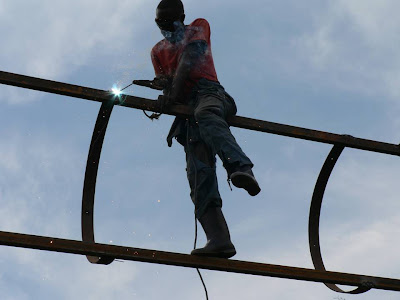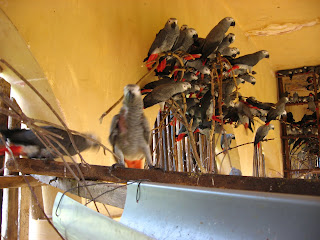The CRPL is officially managed by a committee of three organisations:
Institut Congolais pour la Conservation de
The ICCN is the wildlife authority in DRC. They are in charge of protected areas and community conservation development around these areas. As well, they fight against the illegal animal trafficing and confiscate animals from poachers or private individuals who are housing endangered animals illegally. http://www.iccn.cd
Centre de Recherche en Sciences Naturelles (CRSN) represented by Jacques Mwanga, Chef du département de Biologie du CRSN;The CRSN was established on July 1, 1947 by Prince Charles of
 NGO Coopera represented by Carmen Vidal, Technical Director.
NGO Coopera represented by Carmen Vidal, Technical Director.Coopera is a Spanish NGO which was established in
During this time we have stated that the exploitation of natural and biological resources; together with its loss, is one of the main causes of poverty.
For this reason, we use the conservation of biodiversity as a key strategy for the social and economic development of local communities. COOPERA NGO has always used education as the main tool for the interventions’ durability.
Coopera NGO has been working in DRC since November 2006 developing a “Community Conservation Program” in

The Pan African Sanctuary Alliance (PASA) has extended its conservation network across central
Lwiro is the first new member admitted to PASA since 2008. The facility was accepted into PASA following a detailed application process that included a site inspection and a vote of the PASA advisory council. http://www.pasaprimates.org/

We also are certified by the Global Federation of Animal Sanctuaries.
The Global Federation of Animal Sanctuaries (GFAS) was formed in 2007 by nationally and globally recognized leaders in the animal protection field for the sole purpose of strengthening and supporting the work of animal sanctuaries in the
http://www.sanctuaryfederation.org/gfas/home

Coopera NGO, is also the representative in the field for other international NGO which supported the CRPL since the beginning. These are:
· Venner av Lwiro from
· Rainfer, a Spanish primate rescue center from
· Friends of Lwiro from
·
We have received funds from different organizations. Without their help our work could not continue. All the animals from
· IPPL: International Primate Protection League,
· AWARE
· ISP: International Primatological
·
· AIZA: Asociación Ibérica de Zoológicos y Acuáriums, Spain
·
· Sea World and
·
· Zoo
· FAADA: Fundación para
· MONUC: United Nations Peace Keeping
· Fundacion MONA,
·
· Rotary
· JGI
· JGI
· JGI
· JGI
·
·
· Spanish Ministry of Environment
· Equip
AND TO ALL OF OUR PRIVATE DONORS WHOSE CONTRIBUTIONS MEAN A GREAT DEAL TO ALL OF US! THANK YOU!




 Pepin is now being provided with lots of food and water and a clean environment. He has improved significantly since his arrival! We can't wait until he also has some play mates!
Pepin is now being provided with lots of food and water and a clean environment. He has improved significantly since his arrival! We can't wait until he also has some play mates!






































.JPG)


.JPG)